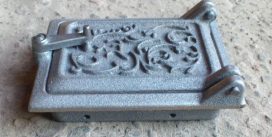What tree to plant in the country, so that she not only brings a lot, a lot of joy to the kids, but also did not bring grief to adults in the future?
Decorate the Christmas tree for the New Year – tradition, which is already more 300 years old. The base was laid for her by a special decree Peter I, commanded to count, that each subsequent year begins 1 января, and «in honor of the New Year to make decorations from fir trees, to amuse children…»
Usually, many are puzzled by buying a Christmas tree just before the holidays.nickname. But summer residents, planting trees on the site, approach this issue with feeling, efficiently, with arrangement. After all, they fundamentally, so that the prickly beauty pleases the eye not only for a week or two, and for many years. Therefore, it is essential to choose a tree, which will not hurt, does not require painstaking care and will feel good in our climate. Do not wonder, but even in the middle of the spruce there are capricious, not suitable for feeding in central Russia. And one more fundamental point: a traditional Christmas tree must be of the correct conical shape.
What kind of Christmas tree to plant in the country, so that she not only brings a lot, a lot of joy to the kids, but also did not bring grief to adults in the future?
Common spruce(Picea abies)
The title doesn't deceive: these are the same trees, which grow in the vicinity of any summer cottage. But go to the nearest forest and dig up a tree you like – not the best solution to the problem. Norway spruce grows quickly, reaching 40 м в высоту, and suppresses other plants (remember, how empty it is in the spruce forest). In addition, because of the shallow root system, it is a windfall breed, and means, potentially dangerous to people and structures on the site. But in the garden, such trees will grow without hassle. – after all, in fact, they are at home. But you should not go to the forest for the common spruce., and to the garden center, where you will be presented with a choice of the most suitable varieties for the site: low, compact, with a twist.
Spruce varieties
| Variety | Height* (m) |
Needle color and other features |
| ‘Ridal’ (‘Rydal’), ‘Kruenta’ (‘Bloody’) | 4 2 | Raspberry color of young shoots. |
| ‘Findonensis’ (‘Finedonensis’) ‘Perris Gold’ (‘Perry’s Gold’) | 3 2 | Creamy yellow color of young shoots. |
| ‘Acrocon’ (‘Acrocona’) | 4 | Cones are formed at the ends of the shoots., raspberry-colored in spring. |
| ‘Aurea‘ (‘Aurea’) | 4 | The needles are golden in spring and turn green in summer.. Young growths are yellow. |
| ‘Aurea Magnifica’) ('Aurea Magnifica') | 2 | The needles are yellow-green in summer and orange in winter. |
| ‘Barry’ (‘Barryi’) ‘Compact’ (‘Compact’) 'Olendorffy’ (‘Ohlendorffii’) | 2 2 6 | The needles are greenish. At a young age, they have a rounded crown.. |
| * mature tree, approximately | ||
Herringbone, grow! Why weeping conifers don't take shape, like on a picture?
Prickly spruce(Picea pungens)
Despite the fact that any tree can be called prickly, under this name are the natives of the North American highlands. It is there in the wild nature that trees grow, whose brothers – one of the signs of Red Square. «Blue» ate just as stable and reliable, like our forest beauty. They withstand freezing winters, do not suffer from hot summer, put up with lack of water. Add to this the beautiful silver-blue needles – and before you is an impeccable tree for a summer cottage. Truth, as in the case of ordinary spruce, it is still recommended to grow varieties. By the way, among them there are plants with a different color of needles.
Spruce varieties prickly
| Variety | Height* (m) |
Needle color and other features |
| ‘Hupsi’ (‘Hoopsii’) | 10 | Very dense crown. Needles from silvery blue to deep blue. |
| 'Oldenburg‘ (‘Oldenburg‘) | 10 | The color of the needles is from silvery-white to bluish-steel. |
| ‘Baby Blue Eyes’ (‘Baby Blue Eyes’) | 4 | The needles are blue-green. Young growths are silvery blue. |
| ‘Byalobok’ (‘Bialobok‘) ‘Nimetc’ (‘Nimetz’) ‘Spring Host’ (‘Spring Ghost’) | 5 1 1 | Blue needles. Cream-colored juvenile growths. |
| ‘Maigold’ (‘Maigold’) | 5 | The needles are green. Young growths are creamy yellow. |
| ‘Herman Noah’ (‘Hermann Naue’) | 1 | Blue-blue needles. In spring, crimson cones form at the ends of the shoots.. |
| * mature tree, approximately | ||
Dark spruce (Picea mariana)
In nature, these thin spruces grow in the forests of North America., all the way to Alaska, and means, they are not afraid of frost. Moreover, they grow as in dry places., and in the swamps. Thanks to this, e. dark is the best suited for planting in areas with excess moisture (verkhovodka, close groundwater, etc.). In culture, varietal plants are usually grown. 'Aureovariyegata' is especially good as a Christmas tree.’ (‘Aureovariegata’), which is more commonly seen on the market as ‘Aurea’ (‘Aurea’). It's low, amazingly beautiful tree with a pyramidal crown and blue-green needles, with golden yellow tips, what makes it seem, as if spruce is sprinkled with gold pollen. AT 10 years it will reach a height of about 3 m.
Several other types of crown have the correct conical shape of the crown.. black, eg, ‘Baysneri’ ('Baissneri') and ‘Doumeti’ (‘Doumetti’).
Serbian spruce(Picea omorika)
The homeland of these firs – Balkan mountains. But, regardless of southern origin, they easily adapt to life in the north: they are planted everywhere even in Sweden and Finland. A distinctive feature of Serbian firs – silvery wornka dense green needles. The variety ‘Nana’ (‘Nana’) – slow-growing herringbone, which will not be higher 5 m. Looks very elegant in the garden and variety ‘Aurea’ (‘Aurea’). When planted in a well-lit place, some of the needles of this tree will have a yellowish color throughout the season.. In height, an adult tree of this variety achieves no more 10 m.
Carefully, ‘Conica’!
At first glance, gray spruce, or canadian, variety ‘Conica’ (Picea glauca ‘Conica’) – perfect version of a Christmas tree, which looks attractive in the garden. And you can buy it on every corner.. In reality, this is a rather capricious plant., requiring landing in a place protected from wind and sun, and additionally, shelters for the winter. The same applies to other similar varieties of Canadian spruce.: ‘Daisy White’ (‘Daisy’s White’), ‘Rainbow End’ (‘Rainbow’s End’) etc..
A source: aif.ru


